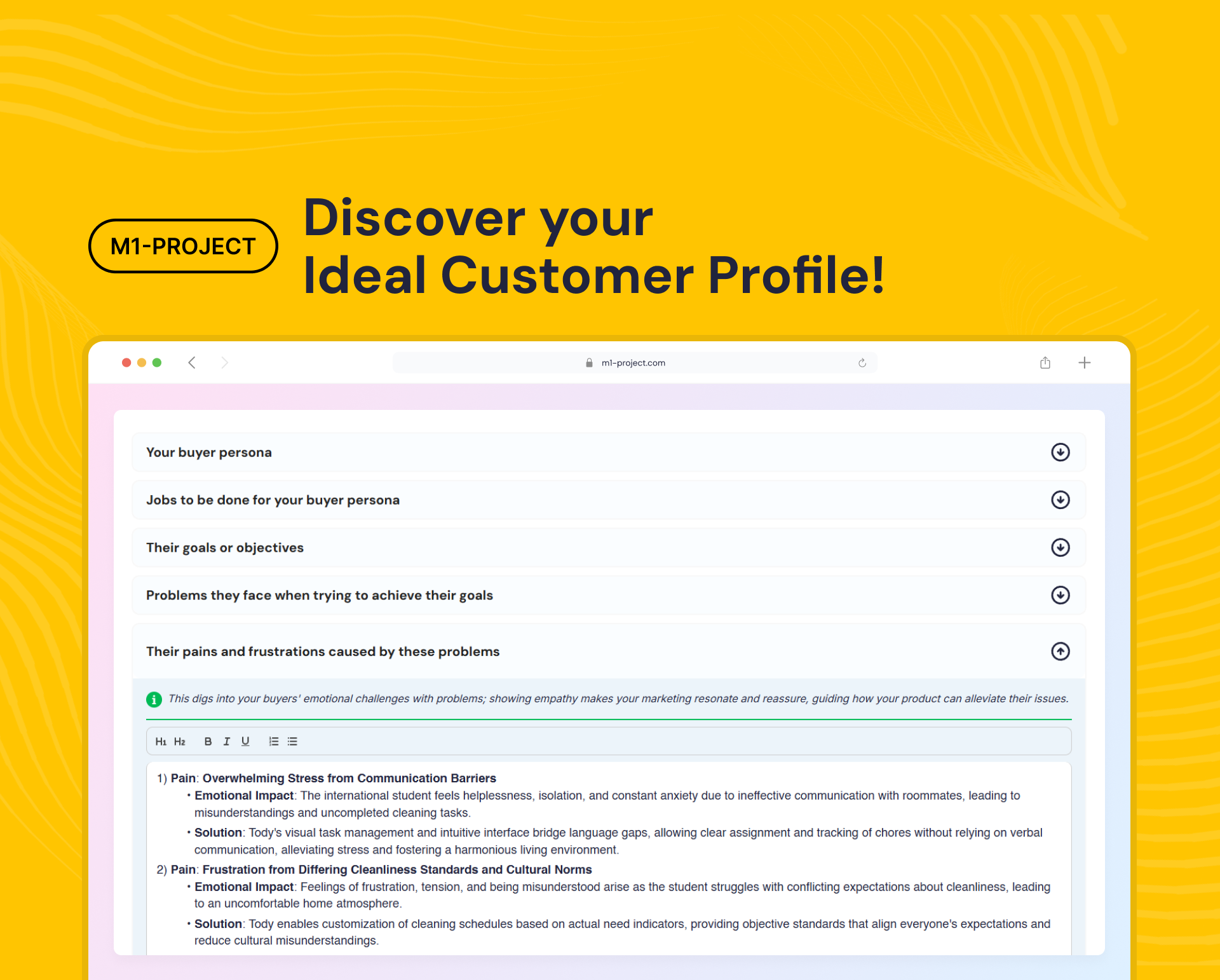M1-Project: Complete Buyer's Guide
AI-powered Facebook advertising optimization for ecommerce
M1-Project is a mid-market AI-powered Facebook advertising optimization platform specifically designed for ecommerce businesses seeking to scale beyond basic automation tools while maintaining strategic control over their campaigns.
Market Position & Maturity
Market Standing
M1-Project occupies a strategic position in the mid-market segment between enterprise solutions and SMB tools, specifically targeting businesses with $1M-$10M revenue seeking capabilities beyond basic automation while maintaining strategic control [37][47].
Company Maturity
The platform's technical capabilities suggest operational maturity through comprehensive integration requirements and structured implementation processes. The 4+ week implementation timeline with defined phases indicates established deployment methodologies, while support structures including 2.3-hour priority response times and dedicated account managers for enterprise tiers suggest operational scale [44][47][52][55].
Strategic Partnerships
Market validation appears through the platform's PartnerStack affiliate program with 90-day cookie windows and 7% commission structures, suggesting established partner ecosystem development [52].
Proof of Capabilities
Quantified Outcomes
The platform's ICP Generator shows measurable effectiveness with 37% engagement improvement over interest-based targeting in documented implementations [43][52]. Creative automation capabilities produce quantifiable efficiency gains, with users reporting 50% reduction in ad setup time through automated targeting and creative variants [42][54].
AI Technology
M1-Project's AI engine centers on three core technological capabilities that differentiate it from both Meta's native tools and competing platforms. The ICP Generator represents the platform's primary innovation, utilizing a proprietary algorithm that constructs ideal customer profiles using 40+ behavioral and demographic indicators [43][52].
Architecture
The platform's architecture enables cross-funnel audience discovery that exceeds Meta's placement-focused optimization, allowing external data integration that native tools cannot provide [37][47][50].
Primary Competitors
Meta's Advantage+ suite, Albert AI, AdCreative.ai
Competitive Advantages
Primary competitive advantages include cross-funnel audience discovery capabilities that exceed Meta's placement-focused optimization and external data integration options unavailable in native platform tools [37][47][50]. The platform's Creative-Bidding Synergy uniquely links audience profiles with real-time bid adjustments, enabling dynamic budget allocation within 24 hours that most competitors cannot match [47][55].
Market Positioning
M1-Project occupies a strategic mid-market position between Meta's enterprise-focused Advantage+ suite and SMB tools like AdCreative.ai, specifically targeting businesses with $1M-$10M revenue seeking advanced capabilities while maintaining strategic control [37][47].
Win/Loss Scenarios
Win scenarios favor M1-Project when organizations require audience discovery beyond Meta's native capabilities, hybrid automation balancing AI efficiency with strategic control, and creative automation for catalog-heavy retailers [37][47][54]. Loss scenarios occur when organizations need pure creative automation (AdCreative.ai advantage), enterprise-level integration (Meta Advantage+ advantage), comprehensive SMB features (Madgicx advantage), or B2B lead generation capabilities requiring specialized professional targeting [37][50][52][53][55].
Key Features

Pros & Cons
Use Cases
Pricing
Featured In Articles
Comprehensive analysis of Meta Ads for Ecommerce for Ecommerce businesses and online retailers. Expert evaluation of features, pricing, and implementation.
How We Researched This Guide
About This Guide: This comprehensive analysis is based on extensive competitive intelligence and real-world implementation data from leading AI vendors. StayModern updates this guide quarterly to reflect market developments and vendor performance changes.
55+ verified sources per analysis including official documentation, customer reviews, analyst reports, and industry publications.
- • Vendor documentation & whitepapers
- • Customer testimonials & case studies
- • Third-party analyst assessments
- • Industry benchmarking reports
Standardized assessment framework across 8 key dimensions for objective comparison.
- • Technology capabilities & architecture
- • Market position & customer evidence
- • Implementation experience & support
- • Pricing value & competitive position
Research is refreshed every 90 days to capture market changes and new vendor capabilities.
- • New product releases & features
- • Market positioning changes
- • Customer feedback integration
- • Competitive landscape shifts
Every claim is source-linked with direct citations to original materials for verification.
- • Clickable citation links
- • Original source attribution
- • Date stamps for currency
- • Quality score validation
Analysis follows systematic research protocols with consistent evaluation frameworks.
- • Standardized assessment criteria
- • Multi-source verification process
- • Consistent evaluation methodology
- • Quality assurance protocols
Buyer-focused analysis with transparent methodology and factual accuracy commitment.
- • Objective comparative analysis
- • Transparent research methodology
- • Factual accuracy commitment
- • Continuous quality improvement
Quality Commitment: If you find any inaccuracies in our analysis on this page, please contact us at research@staymodern.ai. We're committed to maintaining the highest standards of research integrity and will investigate and correct any issues promptly.